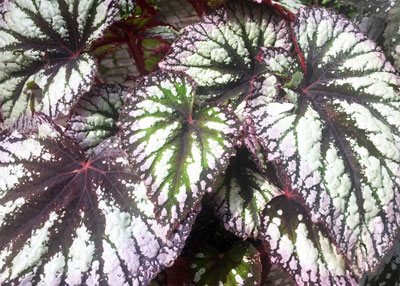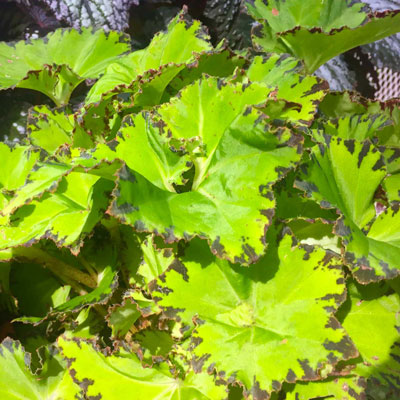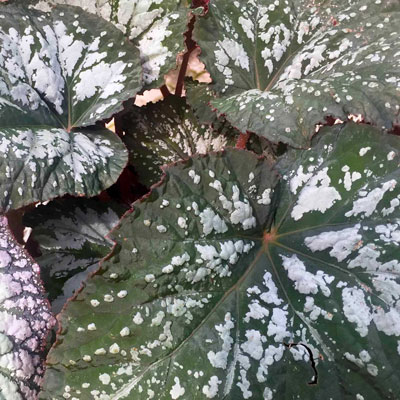From the Sperry Garden: June 10, 2021

When I was a kid I was completely fascinated by the leaf patterns of Rex begonias. But you rarely saw them in nurseries. I’d read about them in old garden books, and I’d fall asleep dreaming of having them growing in my own home greenhouse.

Jump ahead about 25 years. I’d just bought a used greenhouse from a defunct foliage plant leasing company. (They “rented” plants to big office tenants, rotating them out for refreshing in the greenhouse.) I bought it and had it moved off the back of a 60-foot commercial lot, so it’s a full 30×60 ft. in size.
About that same time I found a mailorder company in Connecticut that featured more than 1,000 varieties of Rex and other fancy-leafed begonias. A fellow garden writer worked there, and I asked her to choose the best 300 out of the bunch and ship small plants to me. I potted them up into 1-gallon pots and started to grow them. Grew they did! Before long, I had to choose my favorite 100 and pot them into what eventually became 3-gallon pots. I had those plants for upwards of 10 years, until a new fetish took control of my life (sansevierias).
But you don’t just walk away from your old friends entirely. I’ve always had several fancy-leafed types of begonias in my gardens and greenhouse, and this summer is no exception.

Their needs…
• Shade. Most begonias can’t handle Texas summer sun.
• Moist, highly organic potting soil. I use a mix that’s 60 percent sphagnum peat, 10 percent pine bark mulch, 20 percent perlite and 10 percent expanded shale.
• High-nitrogen, water-soluble plant food applied each time that you water.
• Protection from snails and slugs, especially during cool, moist weather of spring and fall.

Propagation…
Fancy-leafed Rex and rhizomatous types are rooted from leaf cuttings much like African violets. Select vigorous leaves, then use very sharp scissors to trim away two-thirds of the leaf surface to reduce the amount of water lost to transpiration. You can put 6 or 8 leaves into a 6-inch pot filled with the potting soil described earlier. Water the rooting medium thoroughly. Cover the pot loosely with dry cleaner’s plastic to hold in the humidity. Place them in a bright, but shaded setting. The leaf stems (petioles) should begin to form roots within a few weeks. New plants will form along with the roots.

A word about Dragon Wings…
And that word is “great!” This hybrid type of flowering begonia is one of the finest new introductions of the past 25 years. Available in both red and pink varieties, Dragon Wings grow to 12 to 18 inches tall. The plants resemble extremely vigorous wax begonias. Use them in beds or pots. Morning sun, afternoon shade.
